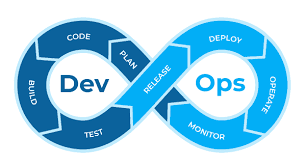Integrating software development with construction and services provides a new viewpoint. It may be a struggle to understand which instrument works best for your group if you are new to your DevOps activities or want to enhance the current processes. We also placed this list together to help you decide on which resources your stack should include.

So in this article, you will get to know about the best DevOps tools and technologies which will help you in the DevOps Course.
- Gradle :
A reliable build tool is required for your DevOps tool stack. For several years the automatic building software industry ruled Apache Ant and Maven, but Gradle appeared on stage in 2009 and has grown steadily since then. Gradle is an amazingly flexible device that enables you to compose your code in Java, C++, Pythons, etc. Gradle has common IDEs, including Netbeans, Eclipse and IntelliJ IDEA, as well. It might help if this does not convince you to learn that Google has announced it as an official Android Studio development device.
- Git:
The computer industry is commonly used in Git, one of the most common DevOps tools. It is a dispersed SCM tool, loved by distant teams and software contributors. It is a source code planning tool. Git lets you track how the development work progresses. If required, you can save your source code versions and revert to the previous version. It is also good for exploring since only when prepared to go you can create different entities and combine new features.
You also have to host servers where your team members will move their research and align Git with your DevOps workflow. GitHub and Bitbucket are undoubtedly the best two web repo facilities. GitHub is known better, but for smaller teams (up to five members of a team) Bitbucket includes a free unrestricted personal rest. For GitHub, you get unlimited access for many ventures only to public residences.
- Jenkins:
For many software development teams, Jenkins is the DevOps automation tool. It is an open-source CI / CD platform to simplify the distribution pipeline’s various stages. Jenkins has a broad plugin community as the main reason for its success. It currently offers over 1,000 plugins and therefore integrates with almost every DevOps tool, ranging from Docker to Puppet.
For Jenkins, the CI / CD system can be set up and tailored to your needs. In the Jenkins Docs, I found the next instance. And it’s only one of the choices. Nice, aren’t they? Nice?
- Bamboo:
Bamboo has many similar features to Jenkins and is Atlassian’s CI / CD database system. Both are common DevOps frameworks to simplify the workflow from development to delivery. Although Jenkins is an open-source, though, Bamboo has a price tag. So here are the eternal questions, if there’s a free alternative, is it worth getting proprietary software? Your plan and your priorities rely on that.
Bamboo has a lot of pre-created apps you need to manually set up in Jenkins. This is also why Bamboo has fewer plugins than Jenkins ‘ 1000 + (around 100). You don’t really need those Bamboo plugins because it does so many items out of the bag.
- Docker:
Since its release in 2013, Docker has been and continues to improve the container system number two. It is also known to be one of the core DevOps resources there. Docker has rendered containerization popular in the technological world, primarily because it facilitates decentralized creation and automates the device delivery. This isolates systems into individual containers, rendering them compact and secure. OS and framework-specific Docker applications are also eligible. Instead of virtual machines like VirtualBox, you can use Docker pods.
- Kubernetes:
It’s all about Kubernetes this year. It is a forum for container orchestration that brings containers to the next stage. Docker or any of its solutions fit well. Kubernetes is very recent still; it was published in 2015 for the first time. It was established by a few Google engineers who wanted a solution to handle containers on a level. You can group your cans in logical units with Kubernetes.
If you have only a few bins, you may not need a container orchestrating system. Nonetheless, once you hit a degree of complexity and must scale the capital, it is the next logical step.
- Ansible:
Ansible is a Puppet or Chef-like configuration management tool. It can be used to customize or simplify the installation of your network. The key selling points are flexibility and ease of use in contrast to other popular DevOps devices. Ansible takes the same path as Puppet with Infrastructure As Software (IAC). But the YAML syntax is very basic. You may describe tasks in YAML with Ansible, while Puppet has its own descriptive language.



